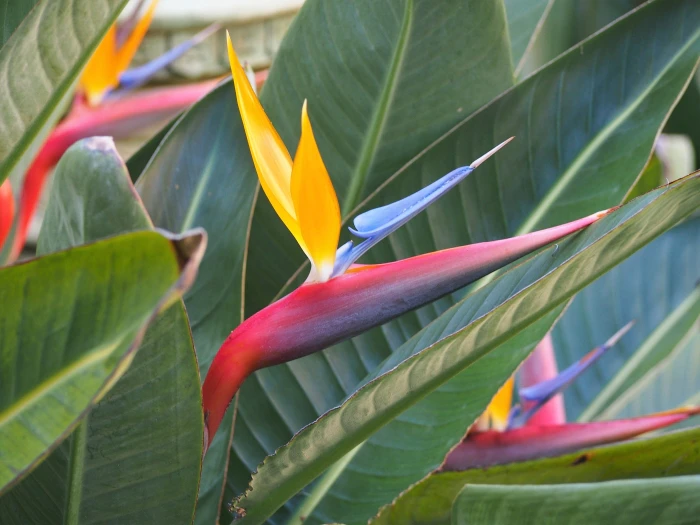Bird of Paradise
(Strelitzia reginae)
Bird of Paradise (Strelitzia reginae)
/
/

Agnieszka Kwiecień, Nova
CC BY-SA 4.0
Image By:
Agnieszka Kwiecień, Nova
Recorded By:
Copyright:
CC BY-SA 4.0
Copyright Notice:
Photo by: Agnieszka Kwiecień, Nova | License Type: CC BY-SA 4.0 | License URL: https://creativecommons.org/licenses/by-sa/4.0 | Uploader: Nova | Publisher: Wikimedia Commons | Title: Strelitzia_reginae_Strelicja_królewska_2023-02-24_07.jpg | Notes: {{Information |Description ={{en|1=Location taken: Longwood Gardens, Kennett Square, Pennsylvania.. Names: Viburnum prunifolium L., Black Haw, Black Haw Stagbrush, Black-Haw, Blackhaw, Blackhaw Viburnum, Häggolvon, Kalina višňo

















































Estimated Native Range
Climate Requirements for Arvada, Colorado
| This Plant | Your Site | Plant Suitability for Your Location | ||
|---|---|---|---|---|
| • Precipitation | 1" - 121" | 18" | Your precipitation may be insufficient for this plant. Irrigate N" / year. | Irrigate N" / year |
| • High Temp. | 63°F - 99°F | 88°F | Your summer temperatures are normal for this plant. | Excellent |
| • Low Temp. | 22°F - 71°F | 17°F | Your winter temperatures may be too cold for this plant | Too cold |
This plant should grow well at your location with about N inches per year (Y minutes per month) of irrigation.
Summary
Strelitzia reginae, commonly known as the crane flower or bird of paradise, is indigenous to South Africa, specifically to the riverine bush, coastal bush, and forest clearings where it enjoys a warm and humid climate. This evergreen perennial is renowned for its striking flowers resembling a bird in flight, which contribute to its popularity as an ornamental plant. It typically grows to 2 m (6.6 ft) tall with clumps of stiff leaves that can reach up to 70 cm (28 in) in length. The flowers, borne on long stalks above the foliage, feature vivid orange sepals and purplish-blue or white petals. Two of the petals are fused into a nectary that attracts sunbirds, which are the primary pollinators in its native habitat.
The crane flower is a low-maintenance plant that thrives in rich, loamy soil with regular watering and feeding. It is tolerant of a range of soil conditions and once established, has low water needs. In non-tropical areas, it is often grown as a houseplant or in greenhouses and conservatories, requiring protection from temperatures below 10 °C (50 °F). It is best situated in full sun to part shade and benefits from medium water and drainage. The plant is propagated by seed or division, with seedlings taking three to five years to bloom. It is susceptible to frost damage and should be sheltered from cold weather. The cultivar ‘Mandela’s Gold’ has yellow flowers. In cultivation, it is used for its beautiful and long-lasting flowers, which peak in winter and early spring, and as a focal point in gardens, borders, and as a container plant.CC BY-SA 4.0
The crane flower is a low-maintenance plant that thrives in rich, loamy soil with regular watering and feeding. It is tolerant of a range of soil conditions and once established, has low water needs. In non-tropical areas, it is often grown as a houseplant or in greenhouses and conservatories, requiring protection from temperatures below 10 °C (50 °F). It is best situated in full sun to part shade and benefits from medium water and drainage. The plant is propagated by seed or division, with seedlings taking three to five years to bloom. It is susceptible to frost damage and should be sheltered from cold weather. The cultivar ‘Mandela’s Gold’ has yellow flowers. In cultivation, it is used for its beautiful and long-lasting flowers, which peak in winter and early spring, and as a focal point in gardens, borders, and as a container plant.CC BY-SA 4.0
Plant Description
- Plant Type: Shrubs
- Height: 3.5-4 feet
- Width: 3-4 feet
- Growth Rate: Moderate
- Flower Color: Blue, Orange, White
- Flowering Season: Spring, Summer, Fall
- Leaf Retention: Evergreen
Growth Requirements
- Sun: Full Sun, Part Shade
- Water: Medium
- Drainage: Medium
Common Uses
Bird Garden, Border Plant, Drought Tolerant, Fire Resistant, Low Maintenance, Potted Plant, Salt Tolerant, Showy Flowers, Street Planting
Natural Habitat
Indigenous to riverine bush, coastal bush, and forest clearings in South Africa
Other Names
Common Names: Crane Flower , Isigude
Scientific Names: Strelitzia reginae , Heliconia bihai , Strelitzia regalis , Strelitzia reginae subsp. latifolia
GBIF Accepted Name: Strelitzia reginae Banks